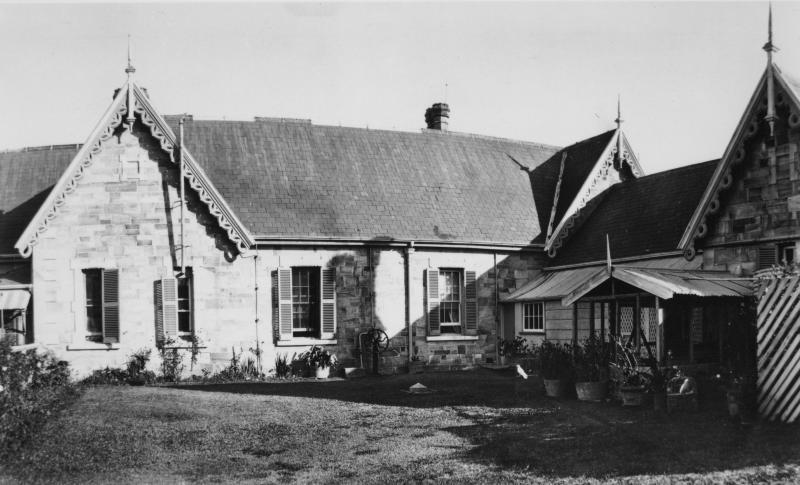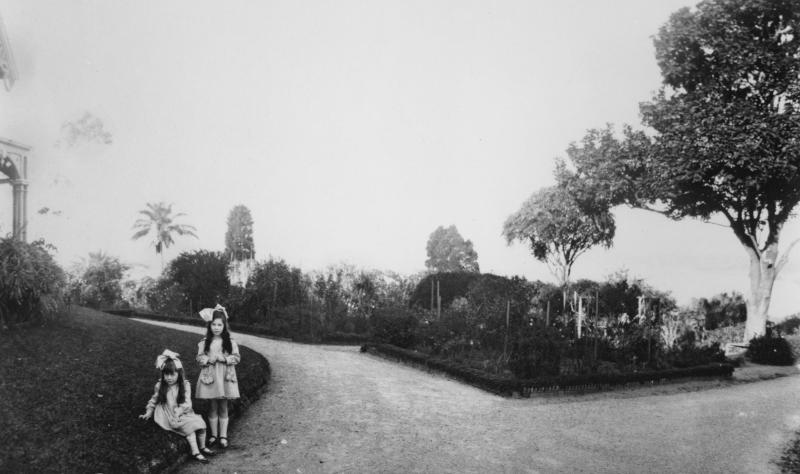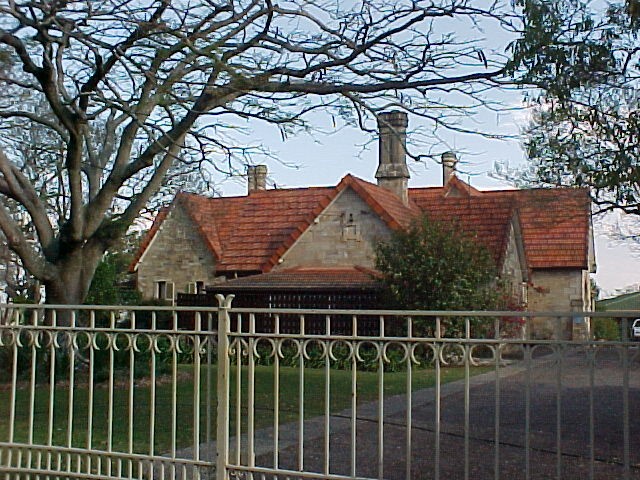Addresses
Type of place
Mansion
Period
Victorian 1860-1890
Style
Rustic Gothic
Addresses
Type of place
Mansion
Period
Victorian 1860-1890
Style
Rustic Gothic
This substantial residence is significant because of the evidence it provides of the early pattern of development in the Hamilton area. It is also a fine example of a mid-Victorian stone dwelling, which is unusual in Brisbane. Designed by prominent Brisbane architect James Cowlishaw, this house was the residence of the Anglican Archbishop of Brisbane, Sir Philip Nigel Warrington Strong, from 1964 to 2006. It is further significant due to the inclusion on the site of an architect-designed chapel built at the entrance to the grounds. The Chapel of the Good Shepherd was designed by the architectural firm Conrad and Gargett, and has strong aesthetic qualities. The chapel highlights the use of the site as a prominent home for Anglican archbishops for over forty years.
Also known as
Bishopsbourne
Lot plan
L1_RP98597
Key dates
Local Heritage Place Since —
Date of Citation —
Construction
Roof: Tile;Walls: Stone
People/associations
A.H. Conrad and T.B.F Gargett (Architect);James Cowlishaw (Architect);
Sir Philip Nigel Warrington Strong (Occupant)
Criterion for listing
(A) Historical; (B) Rarity; (D) Representative; (E) Aesthetic; (H) Historical associationInteractive mapping
Also known as
Bishopsbourne
Lot plan
L1_RP98597
Key dates
Local Heritage Place Since —
Date of Citation —
Construction
Roof: Tile;Walls: Stone
People/associations
A.H. Conrad and T.B.F Gargett (Architect);James Cowlishaw (Architect);
Sir Philip Nigel Warrington Strong (Occupant)
Criterion for listing
(A) Historical; (B) Rarity; (D) Representative; (E) Aesthetic; (H) Historical associationInteractive mapping
History
Eldernell was built in 1869 for William Hemmant, a partner in the Drapery firm of Stewart and Hemmant, and was designed by the prominent Brisbane architect James Cowlishaw. Both Hemmant and his wife Lucy originated from Whittlesey in Cambridgeshire, England near which the town of “Eldernell” is located. It is likely that Hemmant named the property in Hamilton ‘Eldernell’ in memory of the original English location.
Cowlishaw trained as an architect in Sydney before arriving in Brisbane in 1860. He soon established himself as one of the town’s most successful private architects and was also a land speculator, newspaper director and Conservative MLC in the Queensland parliament. Cowlishaw designed bank buildings throughout Queensland in addition to many residences, churches and business premises in Brisbane and elsewhere. His obituary described his architectural legacy as “banks and business premises and the better-class residences”.1
Built on the crest of a hill, the house overlooks the rest of Hamilton and has panoramic views of the city. It was built at a time when Hamilton was sparsely populated and semi rural in character, with only a handful of very fine homes on large estates. Until 1899, the only public transport was horse drawn tram. Hemmant’s estate originally occupied more than four acres of hillside land and stretched from Windemere Rd to what is now Kingsford Smith Drive.
Though substantially reduced from its original size, the estate has remained almost intact since 1939 and is a large land portion to this day. It is one of few remaining examples in the area of the large estates that were subdivided in the 1920’s, and a significant reminder of the elite status the suburb of Hamilton once held. Enclosed within the property are significantly large trees and gardens that contribute to the landmark property’s aesthetic appearance and its visual setting.
The house was renamed Bishopsbourne in 1964 when it became the new home of the Anglican Archbishop of Brisbane, Archbishop Phillip Strong. The previous Bishop’s residence was the original Bishopsbourne at Milton. The original name (Eldernell) is now preserved in the name of the street on which it is located - Eldernell Tce. Following the purchase, the Anglican Church constructed a new chapel at the entrance to the grounds. The Chapel of the Good Shepherd was designed by architectural firm Conrad and Gargett and constructed in 1964. It is reminiscent of the work of Frank Lloyd Wright and is a significant aesthetic addition to the site. The presence of the chapel highlights the use of the site as a prominent home for Anglican archbishops for over forty years.
Description
‘Eldernell’ is a single-story stone mansion designed by James Cowlishaw and constructed in 1869. It is set in the Victorian style, with a steep pitched gable roof and tall medieval chimneys evoking a church-like appearance. This is continued in the gabled porch and Gothic archway. The setting of the house on the crest of a hill, with scenic views and extensive grounds adds to the aesthetic quality of the landmark home.
The Chapel of the Good Shepherd is a modest sized timber and stone building, with an overhanging pitched roof, built at the entrance to the grounds of the property. The tapering plan and glazing bars set in the glass windows at the end of the church focus attention on the altar, while horizontal windows running the length of the chapel on each side allow sunlight into the main area of the chapel.
Statement of significance
Relevant assessment criteria
This is a place of local heritage significance and meets one or more of the local heritage criteria under the Heritage planning scheme policy of the Brisbane City Plan 2014. It is significant because:
Supporting images

Photographer unknown,
'Part of a panorama of the house and garden of Eldernell, Hamilton, Brisbane', undated,
John Oxley Library, State Library of Queensland

Photographer unknown,
'Back of Eldernell, residence in Hamilton, Queensland', undated,
John Oxley Library, State Library of Queensland

Photographer unknown,
'Gardens of Eldernell in Hamilton, Brisbane', undated,
John Oxley Library, State Library of Queensland
References
-
Quoted in Donald Watson and Judith McKay, Queensland Architects of the 19th Century: A Biographical Dictionary (Brisbane: Queensland Museum, 1994), p. 45
-
Brisbane City Council Water Supply and Sewerage Detail Plans
-
BCC Heritage Trail – Hamilton. 3rd edition. Nd
-
Department of Natural Resources, Certificates of Title
-
Queensland Post Office Directories
-
The Queenslander, March 27, 1930
Citation prepared by — Brisbane City Council (page revised May 2021)


